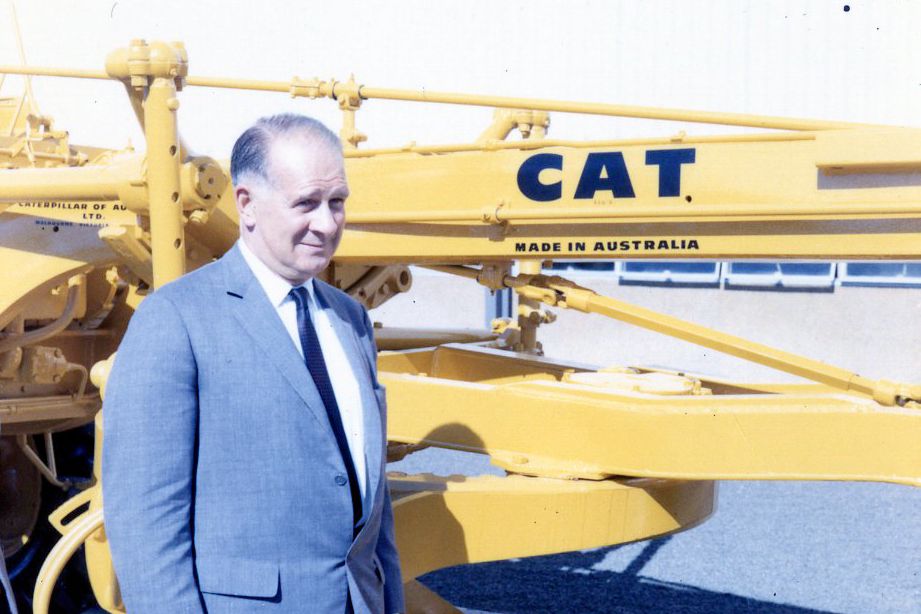
 MEET THE STRATEGIST - BILL BLACKIE
William “Bill” Blackie was born in Glasgow, Scotland, in 1906. After studying accounting, business law and economics, he spent five years as a chartered accountant's apprentice before becoming an accountant himself in 1930. In that same year he came to the United States and was employed by an accounting firm of national prominence before joining Caterpillar in 1939 as controller. He was elected a vice president in 1944, an executive vice president in 1954, a director in 1958, and president in 1962. He became our fifth chairman of the board in 1966.
One of Blackie’s most significant legacies was the transformation of Caterpillar into a truly multinational corporation. Hear in his own words how prior to World War II, Caterpillar equipment was exported from Peoria, Illinois, to our customers across the globe. It was Blackie’s idea that Caterpillar should now “…sell, manufacture, and employ in several different countries.” But such a monumental shift in operations didn’t occur simply for its own sake. Blackie’s reasoning for this evolution was highly strategic. He said, “Caterpillar didn’t do it for the purpose of becoming multinational. It did it to first secure markets which it already held but to be in position to defend against competition and expand those markets which would be difficult to do it from the United States. Being a multinational company provided Caterpillar with the ability to globally compete.” By 1970, sales outside of the U.S. were greater than those inside the U.S. for the first time in company history.
In addition to being a dedicated leader and a keen strategist, Blackie was also a mentor to employees and a true citizen of the world. He often talked about what it meant to be a Caterpillar employee, not just in the U.S. but across the globe, once saying that, no matter where we are, “We want people who, as a natural code of personal conduct, like to pursue excellence in all they do. The success of Caterpillar is based on the work and ability of its people. That is what we call Caterpillar People.”
MEET THE STRATEGIST - BILL BLACKIE
William “Bill” Blackie was born in Glasgow, Scotland, in 1906. After studying accounting, business law and economics, he spent five years as a chartered accountant's apprentice before becoming an accountant himself in 1930. In that same year he came to the United States and was employed by an accounting firm of national prominence before joining Caterpillar in 1939 as controller. He was elected a vice president in 1944, an executive vice president in 1954, a director in 1958, and president in 1962. He became our fifth chairman of the board in 1966.
One of Blackie’s most significant legacies was the transformation of Caterpillar into a truly multinational corporation. Hear in his own words how prior to World War II, Caterpillar equipment was exported from Peoria, Illinois, to our customers across the globe. It was Blackie’s idea that Caterpillar should now “…sell, manufacture, and employ in several different countries.” But such a monumental shift in operations didn’t occur simply for its own sake. Blackie’s reasoning for this evolution was highly strategic. He said, “Caterpillar didn’t do it for the purpose of becoming multinational. It did it to first secure markets which it already held but to be in position to defend against competition and expand those markets which would be difficult to do it from the United States. Being a multinational company provided Caterpillar with the ability to globally compete.” By 1970, sales outside of the U.S. were greater than those inside the U.S. for the first time in company history.
In addition to being a dedicated leader and a keen strategist, Blackie was also a mentor to employees and a true citizen of the world. He often talked about what it meant to be a Caterpillar employee, not just in the U.S. but across the globe, once saying that, no matter where we are, “We want people who, as a natural code of personal conduct, like to pursue excellence in all they do. The success of Caterpillar is based on the work and ability of its people. That is what we call Caterpillar People.”
Our laureates and fellows exemplify the Illinois tradition of business leadership. The IBHF has published the biographies of more than 40 of our laureates and fellows.
Some are currently available online and more are added each month.